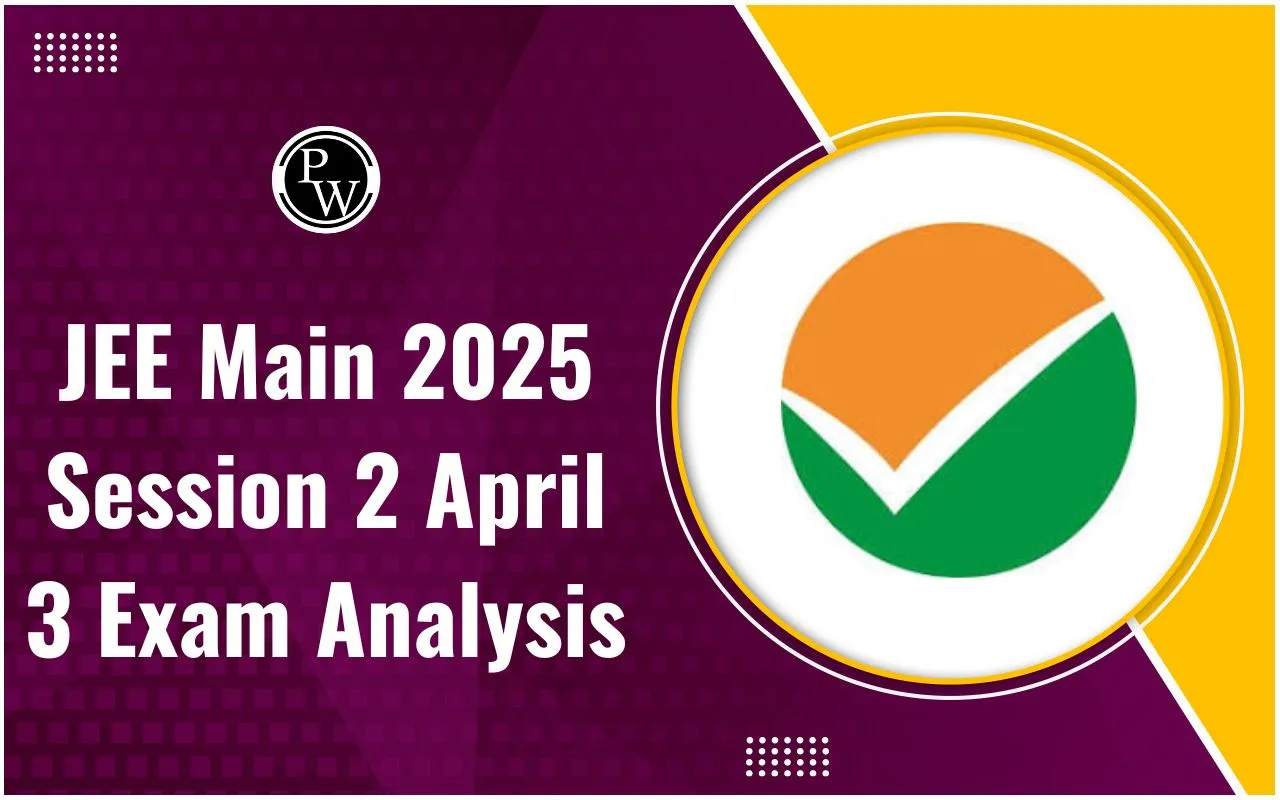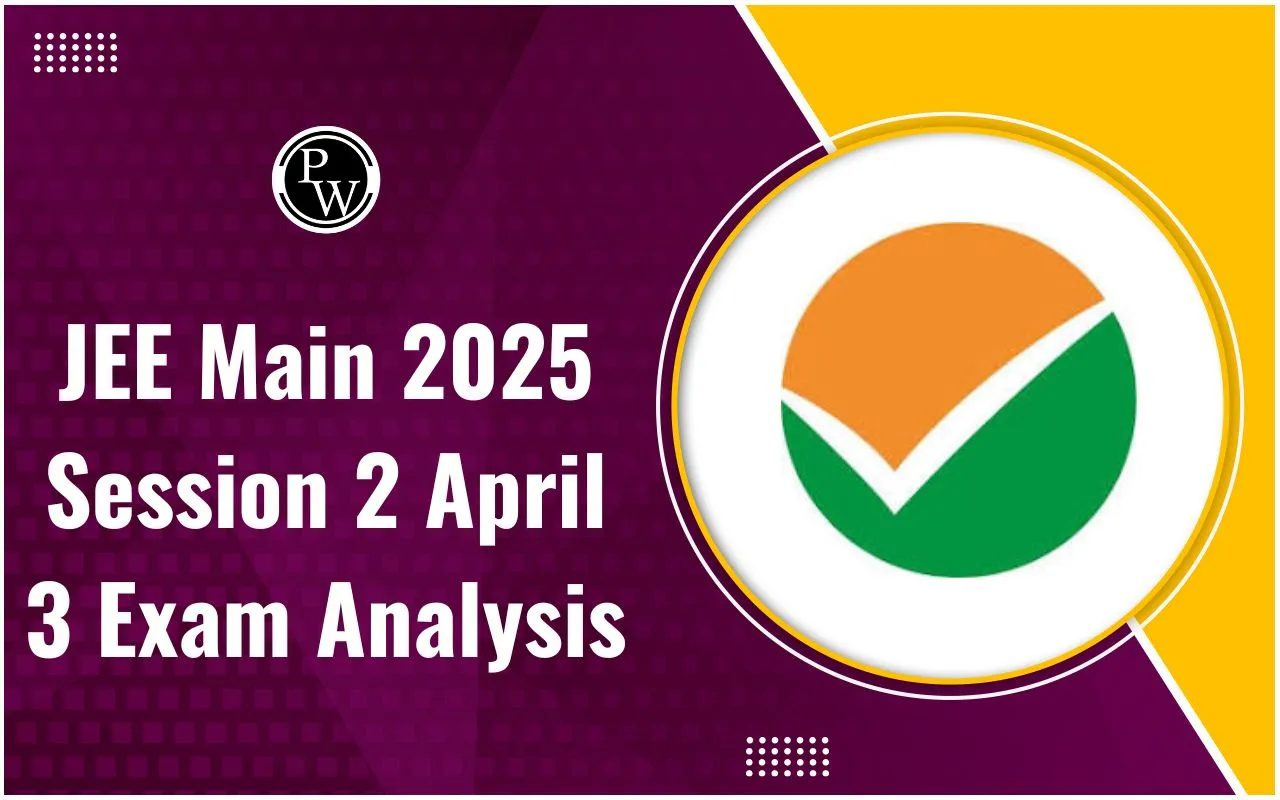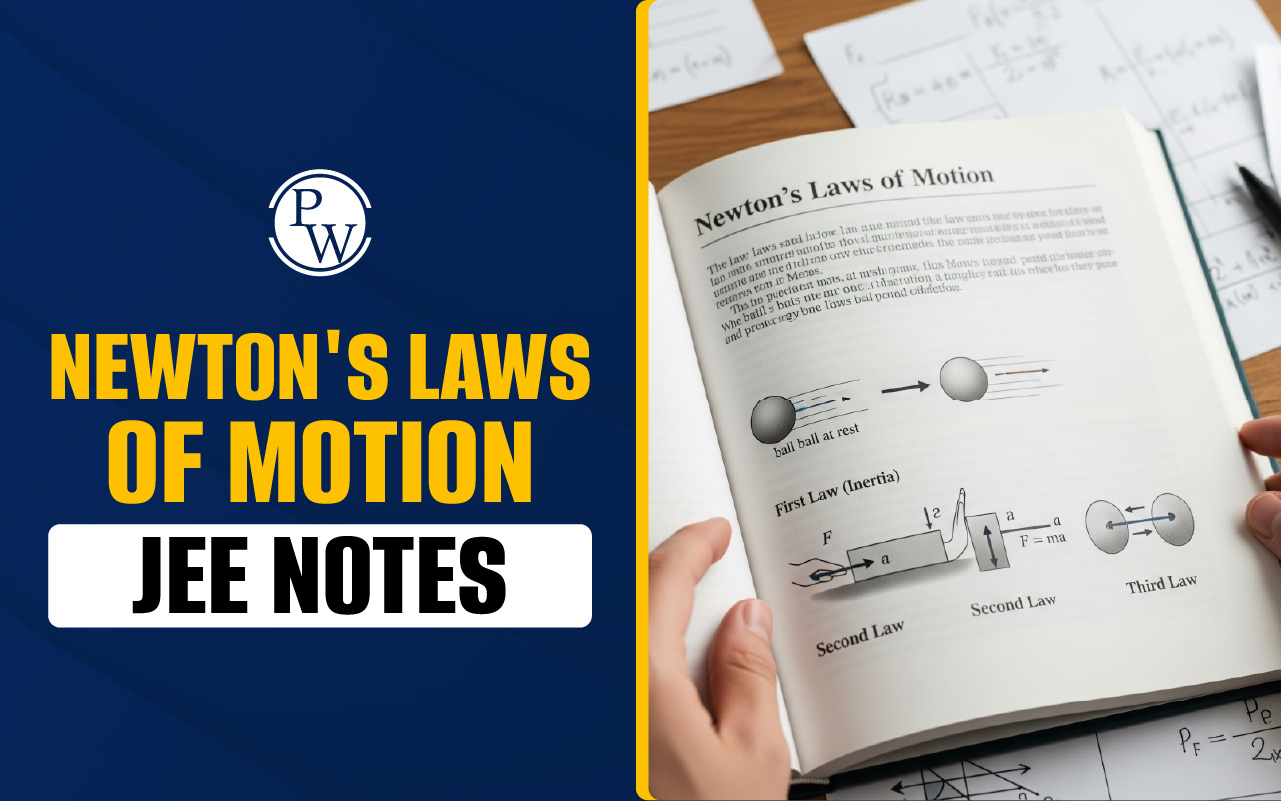

JEE Main 2025 Session 2 April 3 Exam Analysis: JEE Main 2025 Session 2 exams began on April 2 and will continue until April 8 for Paper 1 (B.E./B.Tech.). Today, April 3, is the second day of the examination. Like yesterday, two shifts are scheduled to be held—one in the morning from 9 AM to 12 PM and the second in the afternoon from 3 PM to 6 PM.
Applicants who appeared or are planning to appear for the upcoming shifts must be eagerly waiting for a detailed JEE Main 2025 Session 2 April 3 Exam Analysis, as it helps in understanding the difficulty level, important topics, and types of questions asked. Therefore, for the reference of applicants, the detailed shift-wise JEE Main 2025 April 3 exam analysis will be updated here as soon as the exam concludes.
JEE Main 2025 April 3 Shift 1 Exam Analysis Out
The JEE Main 2025 session 2 Exam for April 3 Shift 1 exam is over, and the student reactions and paper analysis are now available for the reference of other aspirants. As per the test takers, the overall difficulty level was easy to moderate. Subject-wise, Physics and Maths were rated as easy to moderate, though Maths was slightly lengthy, while Chemistry was considered very easy.
JEE Main 2025 April 3 Shift 1: Subject-Wise Difficulty Level
Difficulty level of the exam varied across subjects, with Mathematics being the toughest and Chemistry the easiest.
-
Mathematics: Moderate to Difficult (Lengthy and time-consuming)
-
Physics: Moderate (Balanced mix of theory and numericals)
-
Chemistry: Easy to Moderate (Mostly NCERT-based questions)
JEE Main 2025 April 3 Shift 1 Paper Discussion
As mentioned earlier, the first shift of the JEE Main 2025 April 3 exam started at 9 AM and ended at 12 PM. Now that the exam is over, a detailed JEE Main 2025 April 3 Shift 1 Paper Discussion will be conducted by PW’s dedicated mentors. This session will cover important questions, subject-wise difficulty level, and the overall paper analysis. It will help applicants understand the JEE Main exam pattern, tricky concepts, and the best approach to solving similar questions in upcoming shifts.
JEE Main 2025 April 3 Shift 2 Paper Discussion
The second shift of the JEE Main 2025 April 3 exam has concluded, and the detailed paper discussion is now available. PW’s dedicated mentors have analyzed the exam, covering subject-wise difficulty, important questions, and tricky concepts. This discussion helps students assess their performance and provide valuable insights for those preparing for the upcoming shifts.
JEE Main 2025 April 3 Shift 2 Exam Analysis Out
With the completion of the second shift, the JEE Main 2025 April 3 exam has concluded. Based on student feedback, the overall difficulty level of Shift 2 was moderate to tough. While the paper was balanced, effective time management and a strong grasp of concepts played a crucial role in attempting the questions efficiently.
JEE Main 2025 April 3 Shift 2 Subject-Wise Difficulty Level
-
Mathematics: Moderate, with some lengthy calculations.
-
Physics: Moderate, featuring a mix of theoretical and numerical-based questions.
- Chemistry: Moderate to tough, with some tricky conceptual questions.
JEE Main 2025 April 3 Paper Analysis: Overall Analysis for Both Shifts
The JEE Main 2025 April 3 exam has concluded, and both shifts had a mix of difficulty levels across subjects. Mathematics was the most challenging; Physics was moderate with formula-based questions; and Chemistry ranged from easy to moderate, with a higher focus on Organic Chemistry. Many students found the overall paper to be lengthy, requiring effective time management.
JEE Main 2025 April 3rd Physics Analysis
The Physics section was rated moderate in both shifts, with a good balance of theoretical and numerical questions. Key topics included Mechanics, Electrostatics, Optics, and Units & Measurements. Modern Physics and Magnetism had fewer questions, while EMI and AC were notably absent. The numerical problems were formula-based and straightforward, making this section more manageable for well-prepared students.
JEE Main 2025 April 3rd Chemistry Analysis
Chemistry was considered easy to moderate. Inorganic and Physical Chemistry carried the most weight, whereas Organic Chemistry had slightly fewer but concept-heavy questions. Most theoretical questions were directly sourced from NCERT, making them easier for those who revised thoroughly. However, some data-based questions were tricky and required careful reading.
JEE Main 2025 April 3rd Mathematics Analysis
Mathematics was the most challenging section, rated moderate to difficult. Questions were well-distributed across Matrices, 3D Geometry, Vectors, Conic Sections, Calculus, and Determinants. Some problems were lengthy and time-consuming, making time management crucial. Despite this, students who practiced similar types of questions in mock tests found the paper manageable.
Overall, the JEE Main 2025 April 3 exam was of moderate difficulty, with Mathematics being the toughest section. Students who focused on conceptual clarity and practiced time management were able to handle the exam effectively.
Important Topics for the JEE Main 2025 April 3 Exam for Last-Minute Preparation
As the JEE Main 2025 April 3 Exam is being conducted today, applicants who have their exam in the second shift or in upcoming days may want to focus on important topics that have had high weightage in previous sessions. Based on past trends, here are the key topics for each subject that can help in last-minute revision:
Important Topics for Physics
Physics is expected to have a mix of theoretical and numerical questions. The following topics have had significant weightage in previous sessions:
-
Mechanics: High importance (25-30% weightage)
-
Electromagnetism: High importance (20-25% weightage)
-
Optics: Medium importance (10-15% weightage)
-
Modern Physics: Medium importance (10-15% weightage)
-
Thermodynamics & Kinetic Theory: Medium importance (10% weightage)
Important Topics for Chemistry
Chemistry usually consists of direct questions, mostly from NCERT. The following sections are expected to have high weightage:
-
Organic Chemistry: Very high importance (35-40% weightage), with a focus on reaction mechanisms.
-
Physical Chemistry: Highly important as it generally contributes around 30 to 35% weightage, including numerical-based questions.
-
Inorganic Chemistry: Usually carries a 20 to 25% weightage, with questions related to periodic trends and coordination compounds.
Important Topics for Mathematics
Mathematics is generally considered the most challenging subject. The key topics to focus on are:
-
Calculus: A must-include topic that generally carries around 30-35% weightage, with emphasis on differentiation and integration.
-
Coordinate Geometry: High importance (25-30% weightage), including straight lines and circles
-
Algebra: Medium importance (15-20% weightage), covering quadratic equations and sequences
-
Vectors and 3D Geometry: Medium importance (10-15% weightage)
Focusing on these high-weightage topics can help improve performance in the exam. Practicing previous year’s questions and revising key formulas will be beneficial for last-minute preparation.
JEE Main 2025 Session 2 April 3 Exam Analysis FAQs
Q.1. How many questions are there in the JEE Main 2025 April 3 exam?
Q.2. Where can I find a detailed JEE Main 2025 Session 2 April 3 Exam Analysis?
Q.3. Will the JEE Main 2025 April 3 exam have tough questions?
Q.4. Is Shift 2 of the JEE Main 2025 April 3 exam going to be harder than Shift 1?













